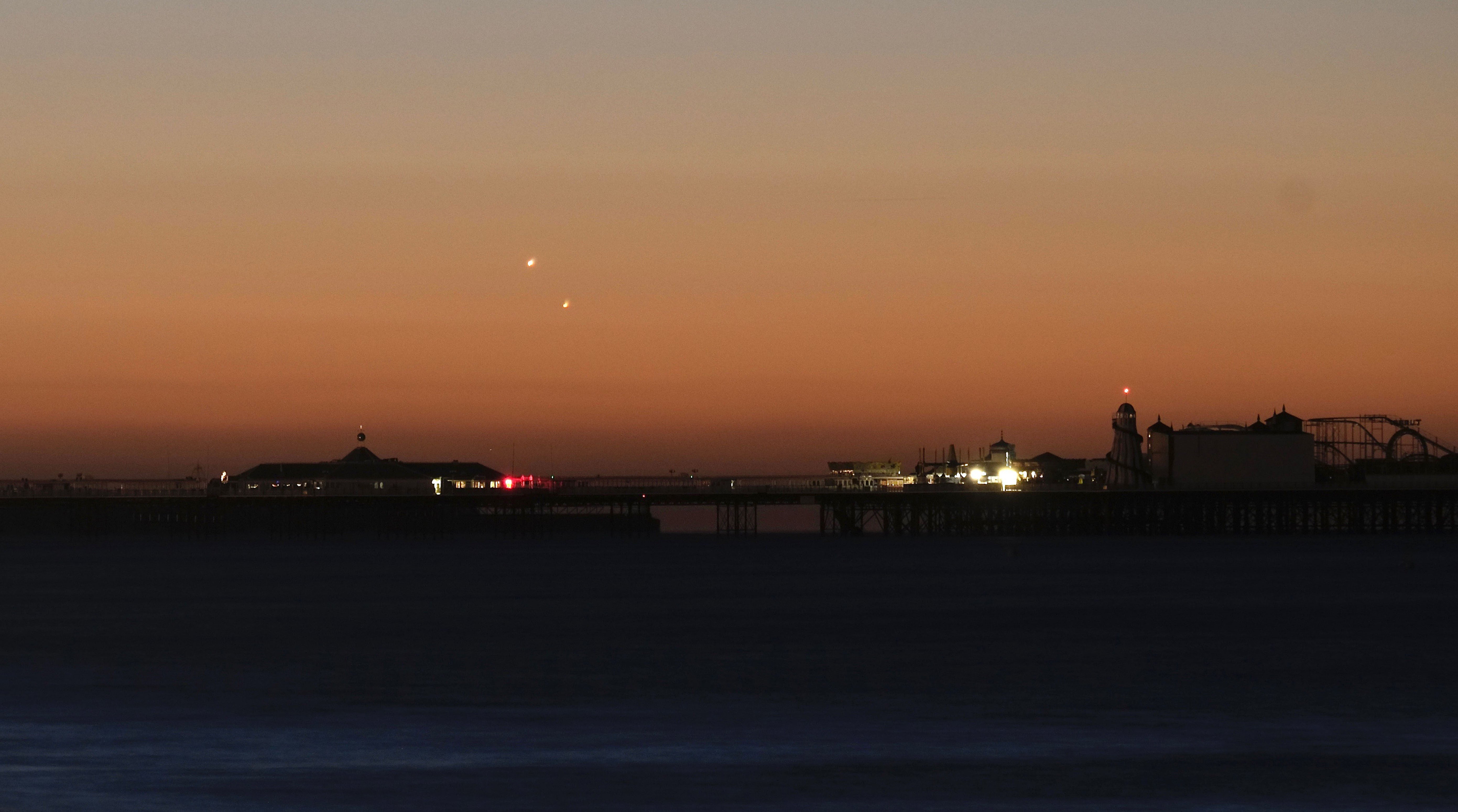Venus and Jupiter align in treat for skygazers
Experts say it is a ‘nice spectacle’ that might be seen at around sunrise.

Your support helps us to tell the story
From reproductive rights to climate change to Big Tech, The Independent is on the ground when the story is developing. Whether it's investigating the financials of Elon Musk's pro-Trump PAC or producing our latest documentary, 'The A Word', which shines a light on the American women fighting for reproductive rights, we know how important it is to parse out the facts from the messaging.
At such a critical moment in US history, we need reporters on the ground. Your donation allows us to keep sending journalists to speak to both sides of the story.
The Independent is trusted by Americans across the entire political spectrum. And unlike many other quality news outlets, we choose not to lock Americans out of our reporting and analysis with paywalls. We believe quality journalism should be available to everyone, paid for by those who can afford it.
Your support makes all the difference.Skygazers are getting the chance to see two bright planets appearing close together despite being millions of kilometres apart.
The cosmic treat shows Venus and Jupiter lined up as they rise above the horizon, and just before the Sun follows after them.
The peak time to see this planetary conjunction, which happens once every few years, was between around 5am and 6am on Saturday but it can still be spotted on Sunday and in the coming days as the planets slowly move apart.
Despite appearing from Earth to be lined up, the planets will not actually be in that position in space.
Dr Robert Massey, deputy executive director of the Royal Astronomical Society, said: “In this particular case you have Venus and Jupiter (appearing) close together and because they are both bright, that’s a nice sight.”
In this particular case you have Venus and Jupiter (appearing) close together and because they are both bright, that's a nice sight
He said: “It is fun. Is it scientifically important – no not really – but it does provide a nice spectacle.
“I think that the nice thing you can have is that with a single telescope eyepiece you can see the two planets together which is an unusual view.”
He added: “Although they appear close together, Venus is about 150 million kilometres away at the moment and Jupiter is 740 million kilometres away.”
A clear eastern horizon is needed to see the event. Buildings, trees and hills will make it much harder to see as they will appear quite low in the sky.
Viewers in the UK will have a harder time of trying to see it than people further south in southern Europe, Africa, or Australia, as the planets will appear to be a lot higher in the sky before sunrise.
Dr Massey said that in the UK “it will be best to stop looking at sunrise so you are not staring at the sun which is bad for your eyes”.
Then once the sun rises, it will be “virtually impossible” to see the event.
He has also said: “You can try to spot the planets with binoculars (use an online star chart to work out where to look) but you must only do that before sunrise as looking at the Sun with binoculars or a telescope can cause serious damage to your eyes – as can looking at the Sun with your eyes alone.”
Met Office meteorologist Craig Snell said: “Venus and Jupiter will not be visible in the sky until around sunrise on Sunday morning, so by then most of England and Wales will be cloudy.
“There is a small chance the southeast could still have some cloud breaks, but the better chance will be across northern Scotland.”